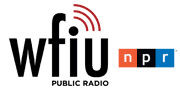If you think that all keyboards were created equal, think again. It is true that harpsichords, clavichords, virginals, fortepianos are all part of the same keyed up family, but each has its own sound and soul. We'll hear from harpsichordist Elisabeth Wright and fortepianist Edmund Battersby on this installment of Harmonia.
Harpsichordist Byron Schenkman performs a Sonata in F Major composed by Domenico Scarlatti on the CD release from Centaur records, D. Scarlatti: Essercizi. Scarlatti composed an amazing 555 of these sonatas for keyboard.
A modern critic once described the harpsichord as “a performance on a birdcage with a toasting-fork.” Luckily, not everyone shares his opinion. So what is the harpsichord? It’s shaped like a grand piano, but its strings are plucked by a plectrum, or small pick. In the old days, this would most likely have been made from the quill of a bird’s feather, or perhaps a stiff piece of leather. Today, some makers still use these traditional materials, but many opt for plectra made from that ubiquitous modern material, plastic.
Harpsichords may feature three complete sets of strings in different octaves. The clavichord usually has one pair of unison strings for each key on the keyboard. Internationally acclaimed harpsichordist Elisabeth Wright told us a bit about them in our interview.
The technique of “bebung,” Elisabeth mentioned in our interview can be used to alter the pitch of a string slightly by applying more of less pressure on the key. Oscar Peterson and guitarist Joe Pass performs “Summertime” from George Gershwin’s Porgy and Bess on a recording from Pablo records. As far as we know, this 1976 album was Oscar’s only attempt to apply bebung to the world of bebop.
Clavichord shapes ranged from simple rectangles to five- and six-sided models. The virginal or virginals, on the other hand, was almost always stuck in the same rectangular shape. Many writers of the time would refer to a given instrument as harpsichord, virginal, spinet, clavichord, clavicembalo, gravicembalo, or simply the generic cembalo.
So, given all these choices not only of name but of instrument, how would you choose which one to play your favorite keyboard piece on? Elisabeth Wright, internationally acclaimed harpsichordist, says that choosing your particular instrument has a lot to do with the composer, region, and time period in which your piece was written. An easy task if you had so many different instruments to choose from, all tuned up and ready to go.
Davitt Moroney performs an Air by Henry Purcell on the CD release from Virgin Veritas, The Purcell Manuscript. During the generation after Purcell, an instrument called the lautenwerk, a harpsichord strung with gut strings instead of brass wire, came into use as an alternative to the clanging of the harpsichord's metal strings. J.S. Bach was said to own two of these instruments. Kim Heindel performs music of Bach written for the Lautenwerk on the Dorian release, Aufs Lautenwerk.
Before any of these instruments came into vogue, however, the clavicytherium might have been the stringed keyboard of choice. It was shaped like a small, upright harpsichord, and developed from harp-like instruments around Flanders during the early 1400s. Marcel Peres and Ensemble Organum perform "Auila altera" from the 15th Century Faenza Codex in its original version for voices and in a transcription for clavicytherium on their Harmonia Mundi release, Codex Faenza.
As early as 1488, Leonardo da Vinci sketched drawings of a fretted, 4-string instrument, with a keyboard that employed a wheel as a bow and called it “viola organista.” In 1575, Hans Heyden of Nürnberg invented the geigenwerk, a wheel-driven keyboard instrument. It didn’t survive, but a geigenwerk built in 1625 by a Spanish priest, Raymundo Truchado, did, and is now at the instrument museum in Brussels.
There are no commercial recordings of the geigenwerk, and to date they have been reconstructed by only three makers in the world. However, thanks to builder Akio Obuchi of Japan, we are able to bring you a sample of what this instrument sounds like. It’s still in the prototype reconstruction stages, and the sound is, shall we say, unique. Be prepared! Akio Obuchi's geigenwerk project.
By 1800, upright pianos existed, with strings that ran vertically to the keyboard. In 1821 the double-escapement was introduced. This mechanism allowed the player to repeat notes quickly. With increasing player demands for volume and tonal color, strings became heavier and frames became stockier. The instrument evolved into the form we now recognize as the piano, short for “pianoforte.” World-renowned pianist Edmund Battersby compared early pianos to modern ones in our interview.
Stepping away from our keyboard theme this week on Harmonia, our new release segment features a recording by award-winning gamba ensemble, Phantasm. This CD features music by four Englishmen, living in the Elizabethan time: William Byrd, Thomas Tallis, Alfonso Ferrabosco the Elder, and Robert Parsons. The title of the recording, Four Temperaments, refers to the different ways in which the instruments are tunes.









